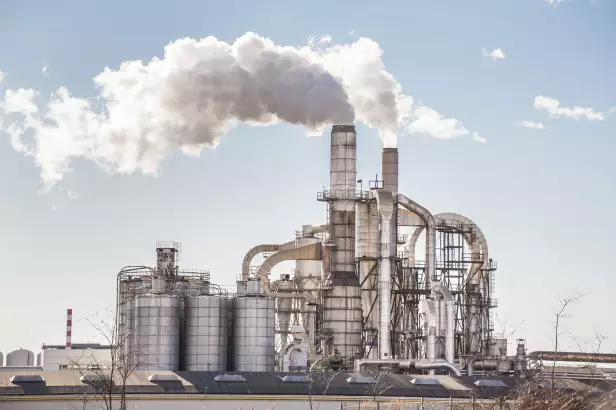RTO air pollution control system maintenance schedule
Introduction
The RTO (Regenerative Thermal Oxidizer) air pollution control system is a highly efficient technology used to reduce air pollution emissions from industrial processes. To ensure the optimal performance and longevity of the RTO system, a comprehensive maintenance schedule must be followed. This article will outline the key aspects of a maintenance schedule for the RTO air pollution control system.
1. Regular Inspections
– Conduct monthly visual inspections of the RTO system components, including the combustion chamber, heat exchangers, valves, and fans.
– Check for any signs of wear, corrosion, or damage. Replace or repair any faulty components to prevent system malfunctions.
– Inspect the burner system and ensure proper ignition and flame stability.
– Monitor temperature and pressure readings to identify any abnormalities.
– Keep a log of inspection findings and maintenance actions taken.
2. Cleaning and Dust Removal
– Clean the heat exchanger surfaces regularly to remove accumulated dust and debris. Use appropriate cleaning methods and tools.
– Check and clean the burner nozzles to maintain efficient fuel combustion.
– Inspect and clean the air filters to prevent clogging and ensure proper airflow.
– Remove any dust or debris from the exhaust stacks and ductwork.
3. Calibration and Testing
– Calibrate the temperature and pressure sensors to ensure accurate readings.
– Perform periodic performance testing of the RTO system to evaluate its efficiency and compliance with emission standards.
– Adjust the control settings if necessary to optimize system performance.
4. Lubrication and Mechanical Maintenance
– Lubricate the moving parts of the RTO system, such as fans and valves, according to the manufacturer’s recommendations.
– Check and tighten any loose bolts or connections.
– Monitor and maintain proper belt tension.
– Inspect and clean the motor and electrical components regularly.
5. Record Keeping and Documentation
– Keep detailed records of all maintenance activities, including inspections, repairs, and replacements.
– Document the dates, findings, and actions taken for future reference.
– Maintain a log of equipment performance, including temperature, pressure, and emission data.


Introduction to our company
We are a high-tech enterprise specializing in the comprehensive treatment of volatile organic compounds (VOCs) waste gas and carbon reduction and energy-saving technology. Our core technologies include thermal energy, combustion, sealing, and self-control, and we have the ability to simulate temperature and air flow fields. Our team also has the ability to test the performance of ceramic heat storage materials, compare zeolite molecular sieve adsorption materials, and test the high-temperature incineration and oxidation characteristics of VOCs organic matter.
We have an RTO technology R&D center and waste gas carbon reduction and engineering technology center in Xi’an, as well as a production base of 30,000 square meters in Yangling. We are a leading manufacturer of RTO equipment and zeolite molecular sieve rotary equipment in the global market. Our core technical team comes from the Aerospace Liquid Rocket Engine Research Institute (Aerospace Sixth Academy). Our company currently has more than 360 employees, including over 60 R&D technology backbones, among whom there are 3 senior engineer-level researchers, 6 senior engineers, and 47 thermodynamic doctors.
Our core products are the rotary valve heat storage oxidation incinerator (RTO) and zeolite molecular sieve adsorption-concentration rotary wheel. Combined with our own expertise in environmental protection and thermal energy system engineering technology, we can provide customers with comprehensive solutions for industrial waste gas treatment and carbon reduction and energy utilization under various working conditions.
Certifications, patents, and honors
Our company has obtained the following certifications and qualifications:
- Intellectual property management system certification
- Quality management system certification
- Environmental management system certification
- Construction industry enterprise qualification
- High-tech enterprise
In addition, we have obtained patents for the rotary valve heat storage oxidation furnace, the rotary-wing heat storage incineration device, and the disc-shaped zeolite rotary wheel.

How to choose suitable RTO equipment
When choosing RTO equipment, the following points should be considered:
- Determine the characteristics of the waste gas.
- Understand the local regulations and emission standards.
- Evaluate energy efficiency.
- Consider operation and maintenance.
- Conduct budget and cost analysis.
- Choose the appropriate type of RTO.
- Consider environmental and safety factors.
- Perform performance testing and verification.
It is important to carefully consider each of these points in order to choose the most suitable RTO equipment for your needs.

RTO air pollution control service process
Our RTO air pollution control service process includes:
- Preliminary consultation, on-site inspection, and requirement analysis.
- Scheme design, simulation and verification, and scheme review.
- Customized production, quality control, and factory testing.
- On-site installation, commissioning, and training services.
- Regular maintenance, technical support, and spare parts supply.
We provide one-stop RTO air pollution control solutions and our professional team can tailor RTO solutions for customers.
Автор: Мия
